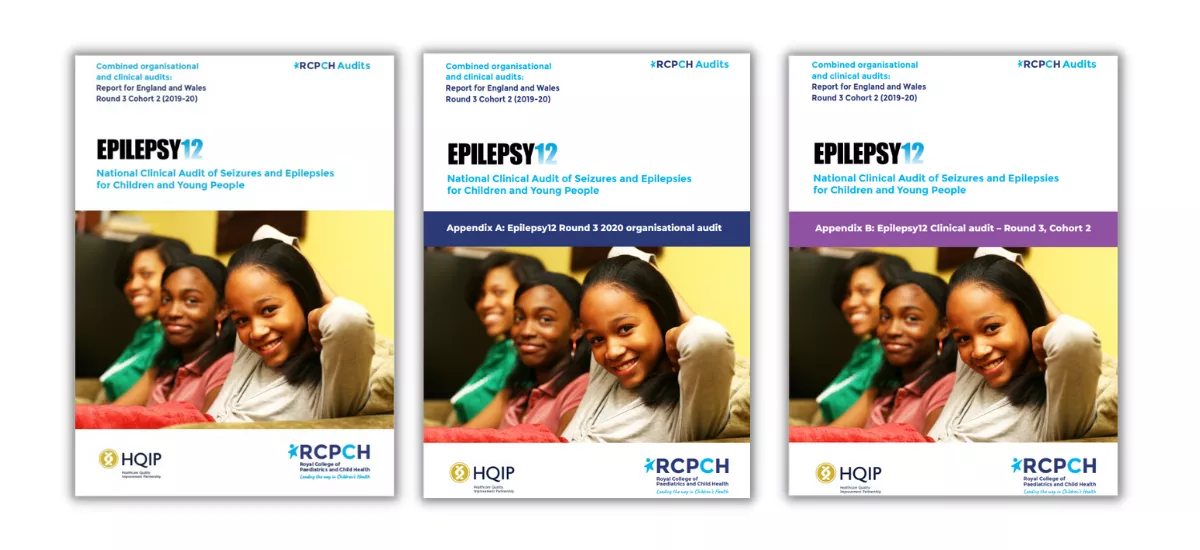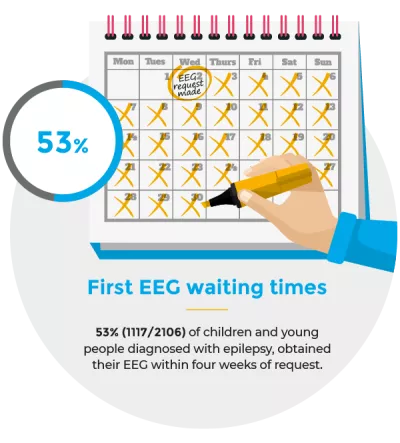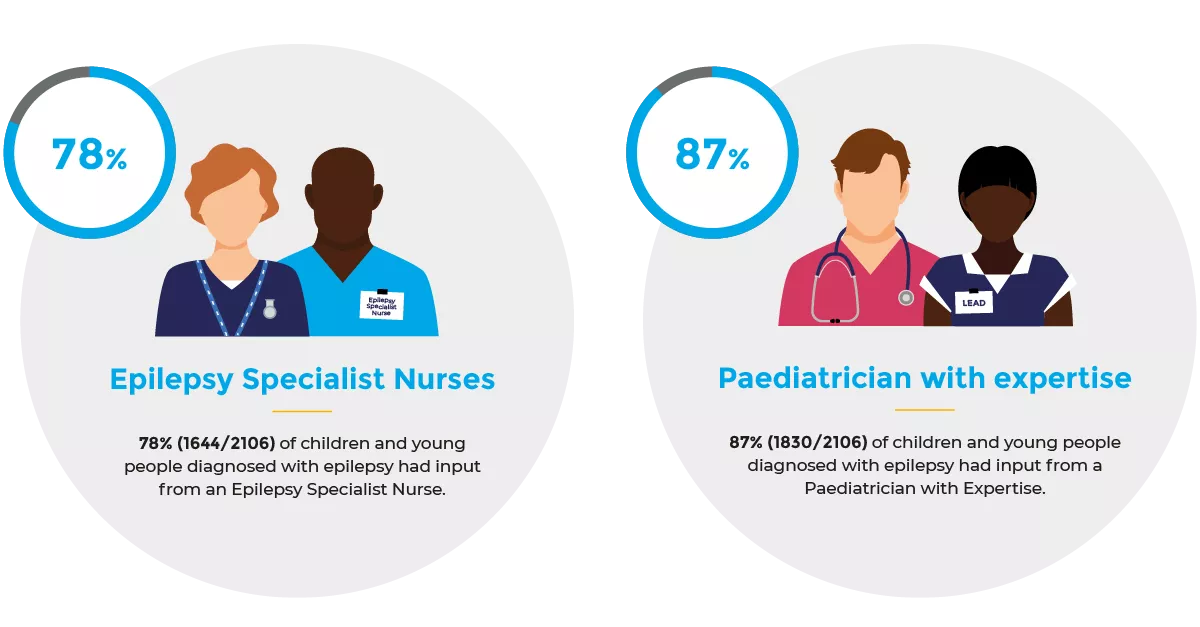
Read our summary here, or download the full report and appendices at the bottom of this page.
Introduction
In previous stages of the Epilepsy12 clinical audit (see below for a background to this programme), there has been considerable variation in the ability of different Health Boards and Trusts in England and Wales to provide adequate workforce time and resources to participate in the national audit. In 2020 this has been more challenging than ever.
We want to recognise the sheer dedication to children and young people with epilepsy that has driven participation in the audit and quality improvement activities this past year. However, gaps in both clinical and organisational audit data indicate that some services had to suspend their activities to focus on maintaining core clinical duties.

Overall, the results for the two cohorts are similar, which highlights both consistent areas of strength as well as continued scope for improvement in aspects such as input from specialists, comprehensive care planning, access to epilepsy surgery services, and links to school epilepsy care plans.
There are case study examples from NHS Trusts, our Epilepsy Quality Improvement Programme and the Epilepsy12 Youth Advocates, showing ways services have been working together to make lasting improvements in care.
Key messages
There were very few children and young people with an identified mental health condition in cohort 2. Without widespread use of screening, opportunities for referral into the appropriate pathway for assessment could be missed.

Children and young people received crucial diagnostic investigations, such as EEG and ECG, during their first year of care. However there were delays, with waiting times exceeding national guidance in some cases.

More children and young people are receiving input into their epilepsy care from specialist nurses and paediatricians. Some children and young people who had on-going seizures did not receive referrals to tertiary neurology services.

Background
Epilepsy12 was established in 2009 and has the continued aim of helping epilepsy services, and those who commission health services, to measure and improve the quality of care for children and young people with seizures and epilepsies. The audit is commissioned by the Healthcare Quality Improvement Partnership (HQIP) as part of the National Clinical Audit and Patient Outcomes Programme (NCAPOP) and is delivered by the Royal College of Paediatrics and Child Health (RCPCH).
Epilepsy is the most common significant long-term neurological condition of childhood and affects an estimated 112,000 children and young people in the UK. Epilepsy12 seeks to help improve the standard of care for children and young people with epilepsies. To do this, the audit collects and processes patient data. This information is used by the audit to highlight areas where services are doing well, and also identify areas in which they need to improve.
The clinical audit data describes patient care of ‘cohort 2’. This is children and young people who had a first paediatric assessment for a ‘paroxysmal episode’ (or episodes) between 1 December 2018 and 30 November 2019. Paroxysmal episodes are any epileptic seizures, non-epileptic seizures, or seizures of uncertain origin. Epilepsy12 follows patients for twelve months of care following their first assessment. For many children and young people in cohort 2, this includes care provided during the COVID-19 pandemic in 2020.
The organisational audit data describes the services and workforces of paediatric services, at Trust and Health Board level, in England and Wales as they were in November 2020. At this time the NHS was dealing with a significant surge in COVID-19 cases and hospitalisations in both England and Wales.
Within the clinical audit, there are 12 measures which were derived from national guidelines and recommendations. These are referred to as the ‘Performance Indicators’ in the full results presented in Appendices A and B. You can download the report and both appendices below.
Results by Health Board/Trust and regional network
Our detailed results spreadsheets (download these MS Excel files below) cover the Round 3 clinical audit data for cohort 2 and the 2020 organisational audit results.
In the first tab, 'Summary', you can click on one of the 10 topics to see results for that topic, or 'All data' to see results for all topics.
You can filter each worksheet to view and compare data for one or more NHS Health Boards/Trusts, or Regional Paediatric Epilepsy Networks, or you can view for all units in England and Wales.
The audit measures that relate to the national report's key findings are highlighted in purple columns.










